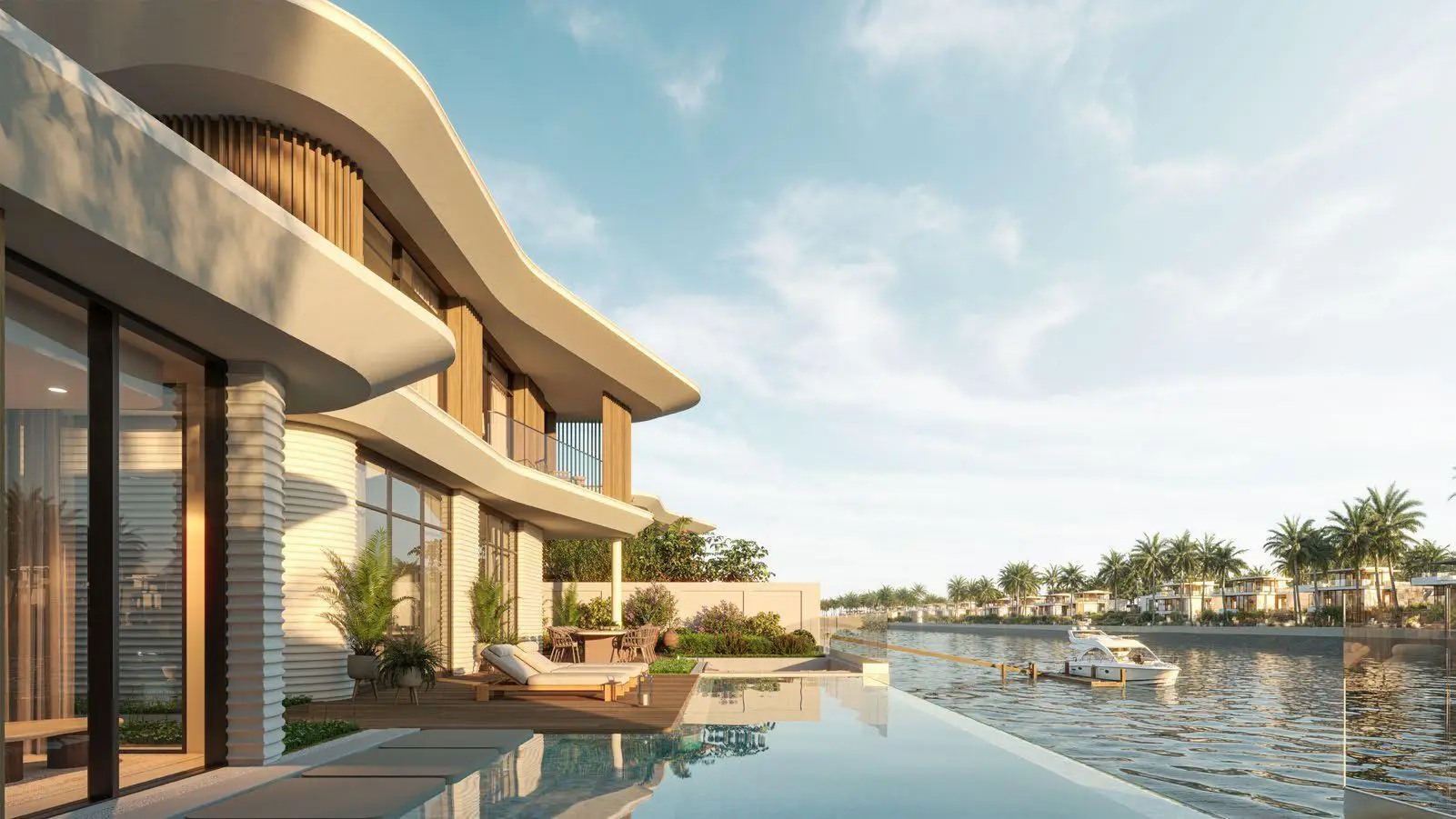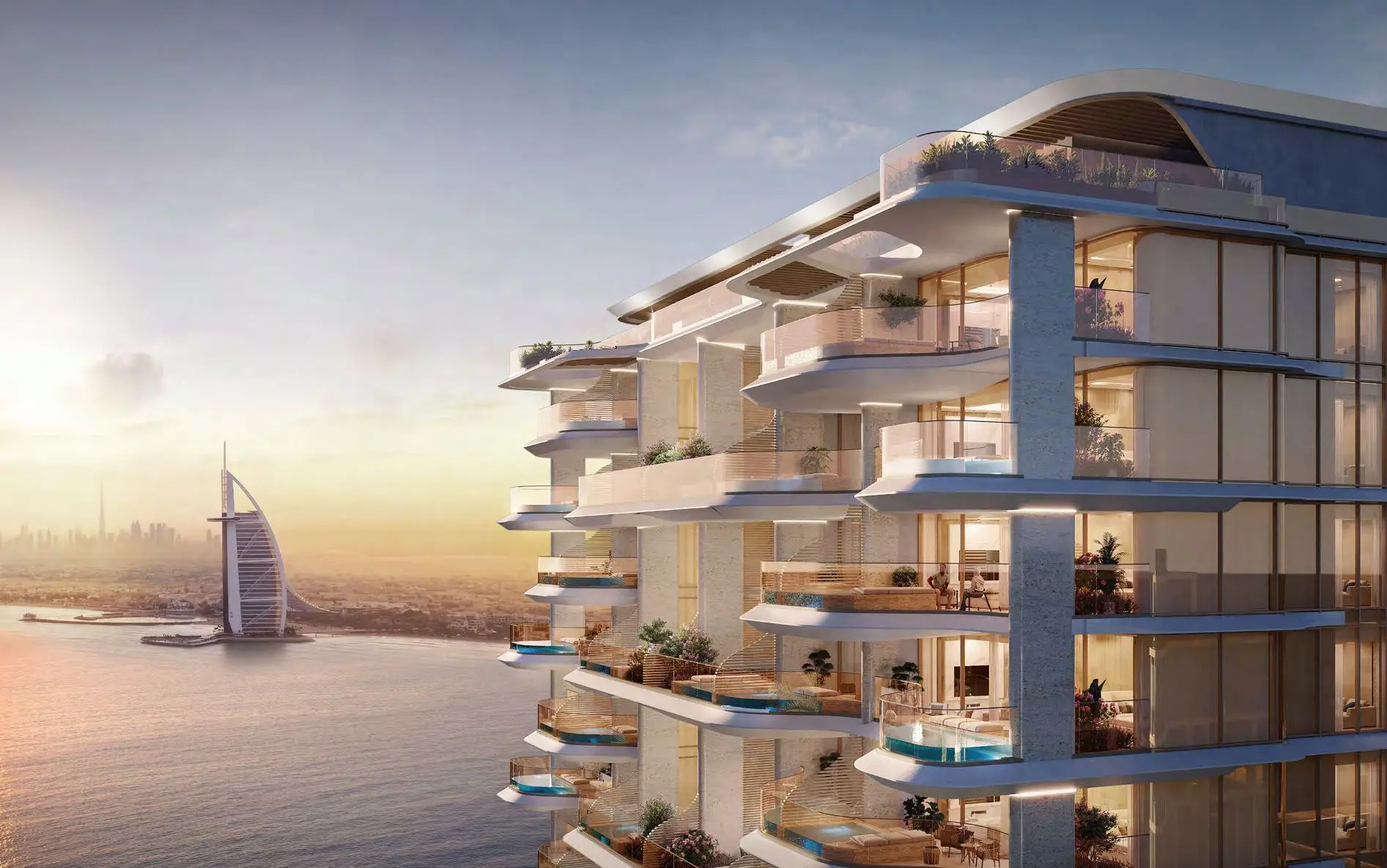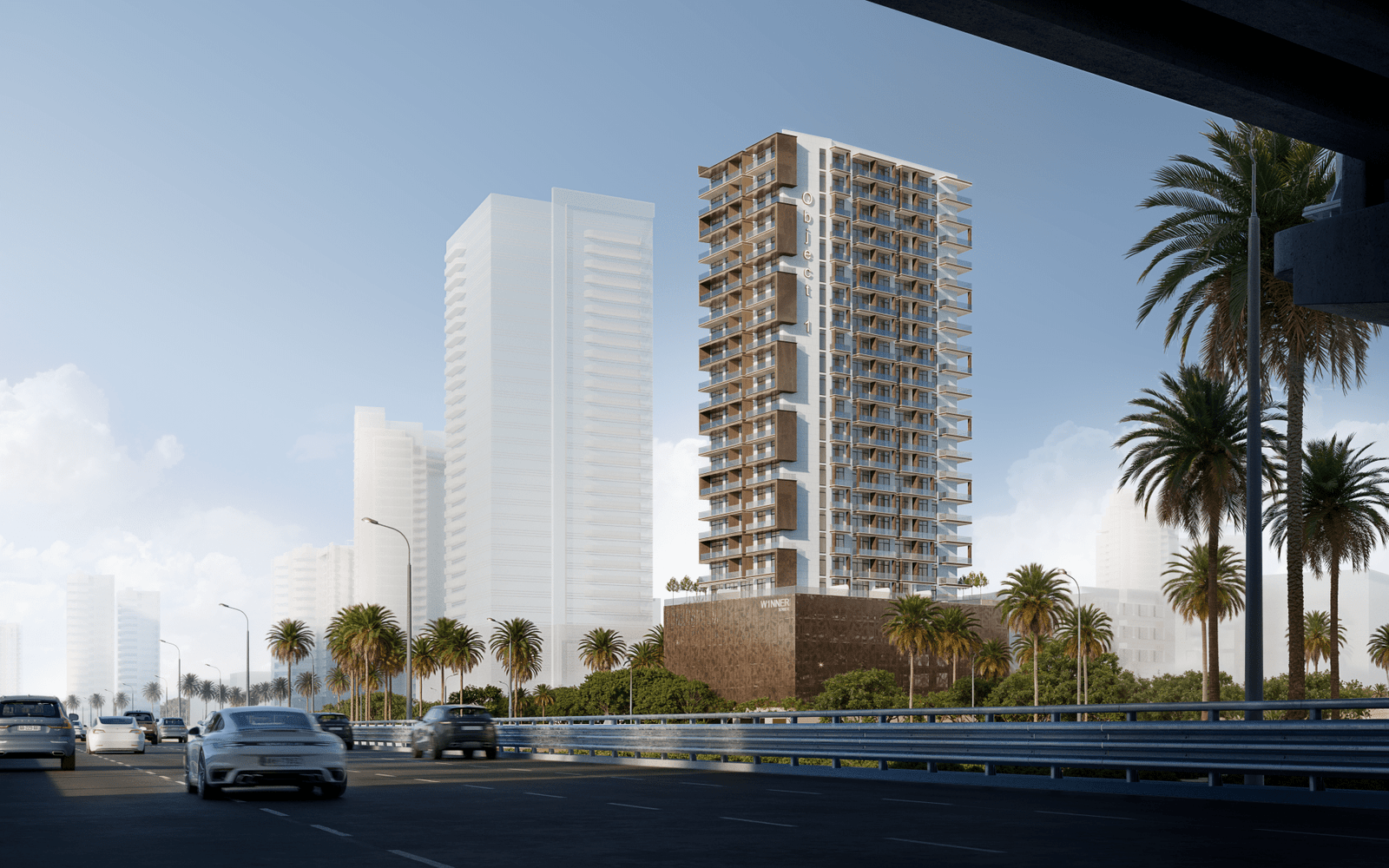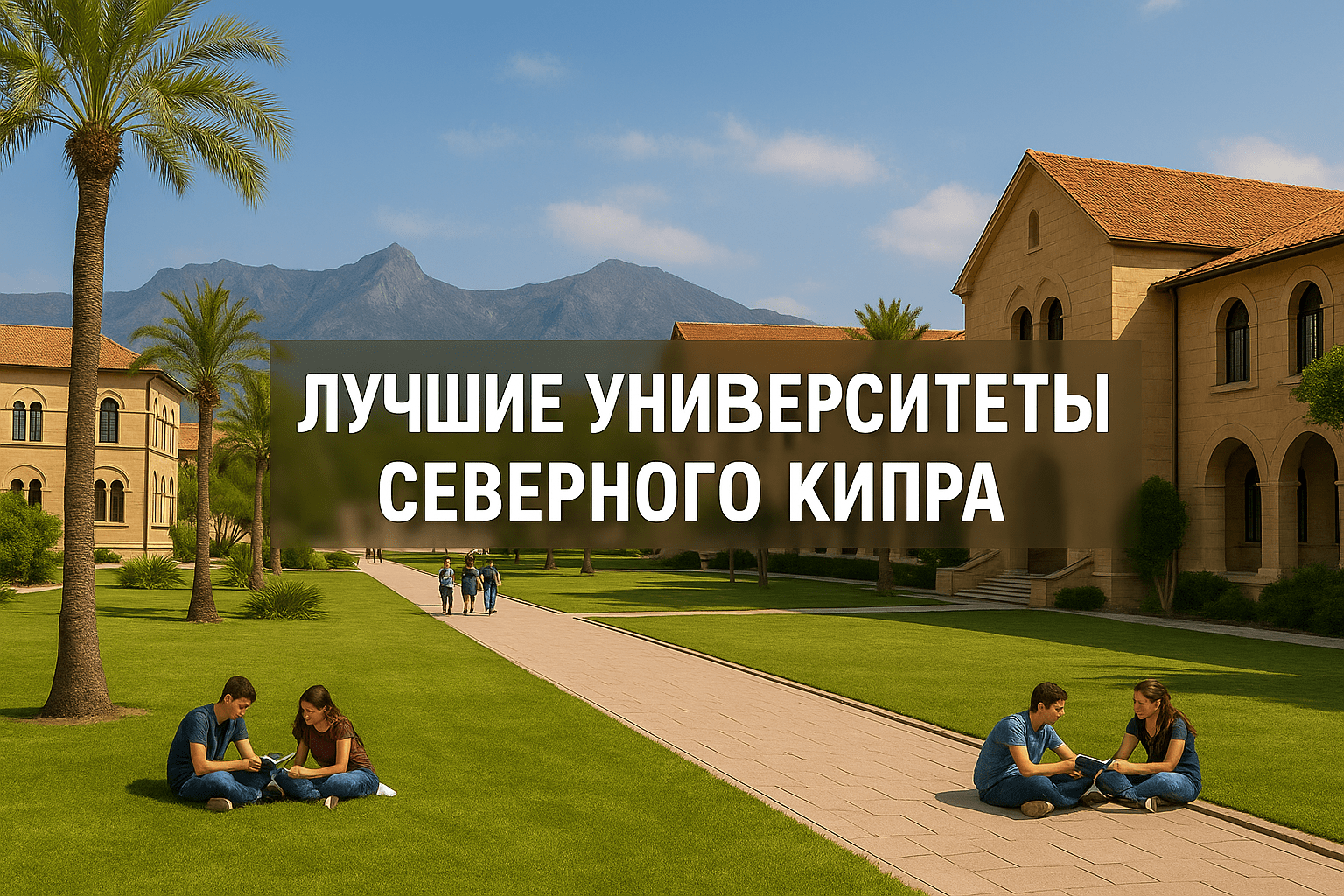
Guide to Madrid: the best places to live and relax
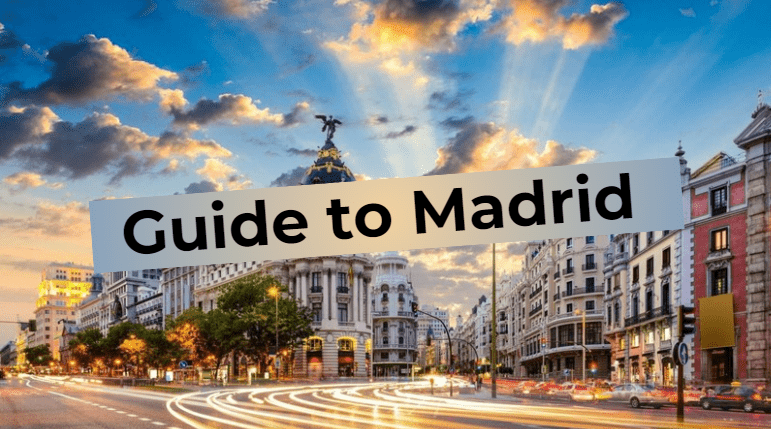
Madrid, the capital of Spain, is famous for its rich history, cultural attractions and diverse neighborhoods, each with a unique character and atmosphere. In this article, we will guide you through the best neighborhoods in Madrid to help you choose the perfect place to live and relax.
Madrid on the map
Madrid is located in the heart of Spain, making it strategically important and convenient for traveling throughout the country. The city is about 650 meters above sea level, which gives it unique climatic and natural features.
How to get to Madrid
Madrid is the capital of Spain and one of the most visited cities in Europe, with excellent transportation accessibility for both international and domestic travelers. Depending on your location and preferences, you have several ways to get to Madrid.
Air transportation
Adolfo Suárez Madrid-Barajas Airport (MAD)
- International flights: Barajas Airport is the largest airport in Spain and one of the main air hubs in Europe. It serves flights from most major cities around the world, including New York, London, Paris, Beijing and many others.
- Domestic flights: Within Spain, you can get to Madrid quickly from Barcelona, Valencia, Seville and other cities thanks to frequent domestic flights.
How to get from the airport to the center of Madrid:
- Subway: Line 8 (pink line) connects the airport with the city center (Nuevos Ministerios station). Travel time is about 15-20 minutes.
- Buses: EMT Express Bus #203 runs between the airport and the city center (Atocha Station) 24 hours a day.
- Cab: Cab stands are located at each terminal, the cost of a trip to the city center is about 30 euros.
- Train: The direct train line C-1 Cercanías connects the airport to central Madrid stations including Atocha and Chamartín.
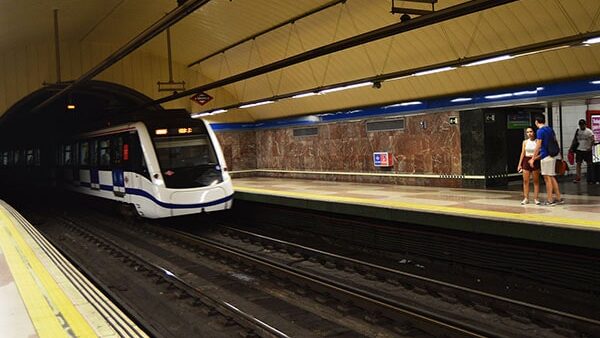
Railroad transportation
Madrid is connected by AVE high-speed trains to most major Spanish cities:
- Barcelona: The trip takes about 2.5 hours. The approximate cost of a one-way ticket is $60-$120.
- Seville: The trip takes about 2.5 hours. The approximate cost of a one-way ticket is $50-$100.
- Valencia: The trip takes about 1.5 hours. The approximate cost of a one-way ticket is $40-$80.
- Málaga: The trip takes about 2.5 hours. The approximate cost of a one-way ticket is $50-$110.
Prices may vary depending on the season, time of purchase and class of service selected. It is recommended to book tickets in advance to get the best prices.
Bus transportation
Madrid has a well-developed network of bus routes connecting it to other cities in Spain and Europe. The main bus stations are:
- Estación Sur: The central bus terminal from where flights to most major cities in Spain and Europe depart.
- Avenida de América: Important bus hub for travel to northern and eastern destinations.
Approximate cost of bus tickets:
- Intercity flights in Spain: $10 to $50 depending on the destination and class of service.
- International flights to Europe: $50 to $150 depending on the country of destination and distance.
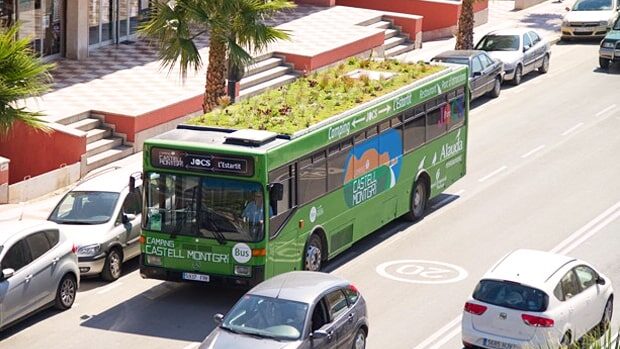
Madrid's highways
Madrid is connected to other Spanish regions by a network of modern highways:
- A-1: Connects Madrid with the north of Spain (Burgos, San Sebastian).
- A-2: Leads to the northeast (Zaragoza, Barcelona).
- A-3: Connects Madrid to the east (Valencia).
- A-4: Leads to the south (Seville).
- A-5: Connects Madrid to the west (Badajoz, Lisbon).
- A-6: Leads to the northwest (La Coruña).
No matter which way you decide to get to Madrid, the city will offer you plenty of options for a comfortable and interesting journey.
History of Madrid
Madrid, now one of the cultural and political capitals of the world, dates back to the ninth century, when the present-day city of the fortress of Mayrit was founded. by the Muslim rulers of Spain. The first mention of Madrid dates back to 865, when the Emir of Cordoba, Mohammed I, ordered a small fortress to be built here for defense against the Christian kingdoms to the northwest.
Over time, the control of the Madrid went to the Christians.In 1083, the city was captured by Alfonso VI of Castile and León. Madrid soon became a royal city and the seat of royalty, laying the foundation for its further growth and development.
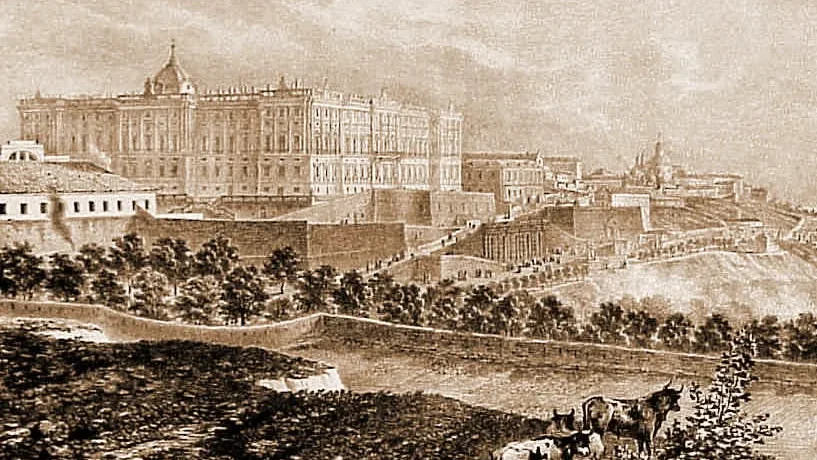
Under Habsburg rule, beginning with Philip II, Madrid became the capital of Spain. In 1561, Philip II moved the royal court from Toledo to Madrid, making it the political and administrative center of the country. From then on, the city began to develop rapidly, becoming a center of culture and art.
During the Bourbon rule in the 18th century, Madrid continued to grow and develop. King Charles III, who ruled from 1759 to 1788, was known for his reforms and projects to improve the city. Numerous buildings, parks and streets were constructed, many of which still remain today. Famous landmarks such as the Puerta de Alcala and the Prado Museum were created during this period.
The nineteenth century was marked by turbulent events in the history of Madrid. The war of independence against Napoleon, numerous revolutions and civil wars left their mark on the city. However, despite all the turmoil, Madrid continued to develop and modernize, becoming an increasingly important center not only of Spain, but also of the whole of Europe.
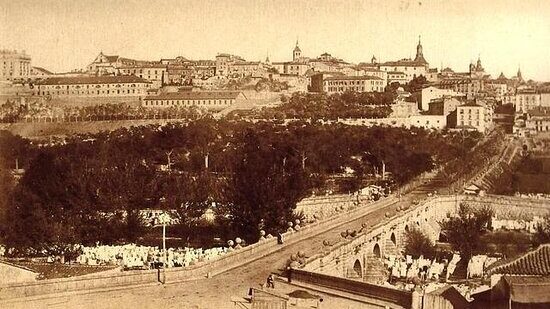
In the twentieth century, Madrid survived the Franco dictatorship and the democratic transformation after his death. Since 1978, with the adoption of a new constitution, Madrid has become a symbol of the new democratic Spain. The city has undergone significant infrastructural changes, improved the transportation network and restored historic buildings.
Today, Madrid is a modern metropolis with a rich historyIt combines ancient traditions and modern art, making it attractive to both tourists and residents from all over the world.
Culture and traditions
Madrid is known for its cultural traditions such as flamenco, bullfighting and numerous festivals. The city is also home to many museums, theaters and galleries, including the famous Prado Museum and the Queen Sofia Art Center.
Flamenco
- Description: Flamenco is not just a dance, it is an expressive art that incorporates dance, singing and guitar music.
- Where to watch: There are many places to enjoy flamenco in Madrid, such as Corral de la Morería, Cardamomo and Casa Patas.
- Festivals: Madrid's annual flamenco festival attracts the best performers from around the world.
Corrida
- Description: Corrida is a traditional Spanish spectacle where matadors fight bulls. This art form has deep roots in Spanish culture.
- Arena: Plaza de Toros de Las Ventas is Madrid's most famous bullfighting arena, hosting major fights and festivals.
- Season: The main bullfighting season runs from March through October, culminating in San Isidro, the largest bullfighting festival in the world.

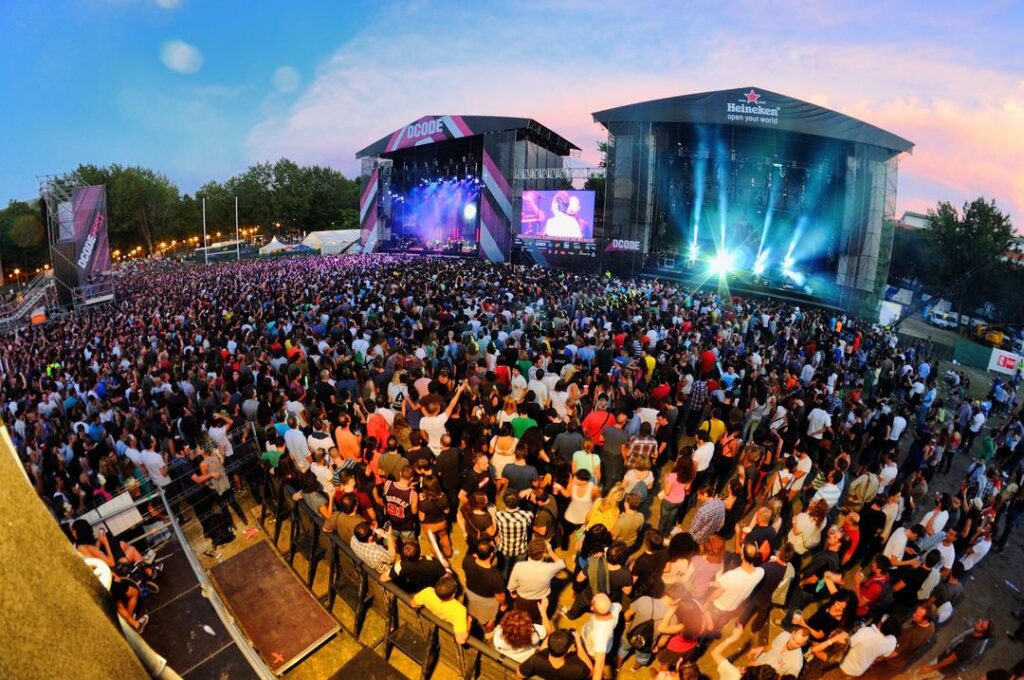
Festivals
- San Ysidro: Celebrations in honor of Madrid's patron saint, St. Isidre, include parades, musical performances, fairs and bullfights.
- Spain Day (October 12): National holiday with parades and cultural events.
- Christmas: In December, Madrid transforms into a fairytale city with Christmas fairs, decorations and light installations.
- Carnival: February Carnival in Madrid is a time of colorful costumes, parades and street parties.
Museums
- Prado Museum: One of the largest and most important art museums in the world, with a collection of works by great masters such as Velázquez, Goya and El Greco.
- Queen Sofia Center for the Arts: A modern museum featuring the work of Pablo Picasso, Salvador Dali and other avant-garde artists.
- Thyssen-Bornemisza Museum: A private collection covering art from medieval to modern times.
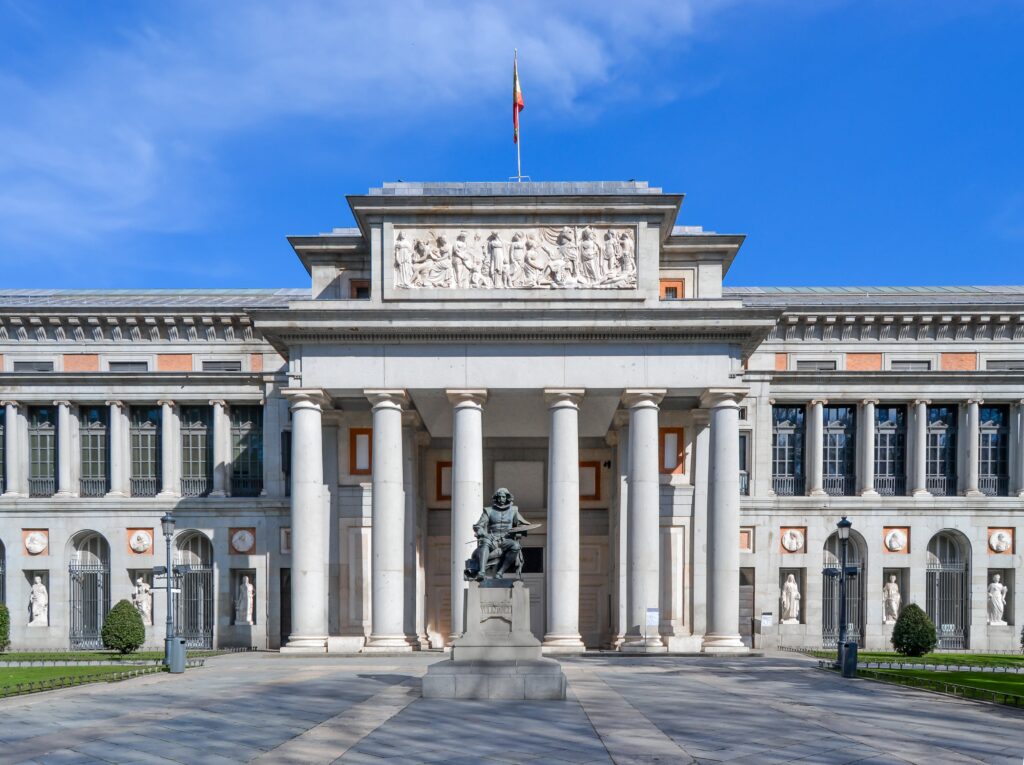
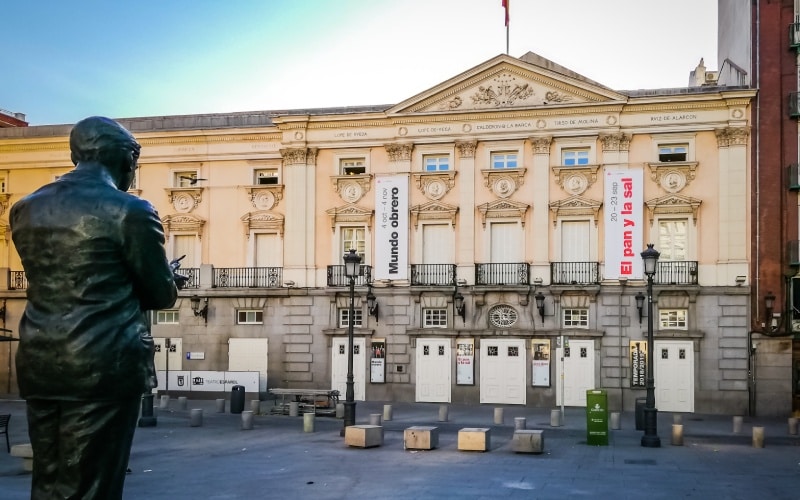
Theaters
- Royal Theater (Teatro Real): Madrid's main opera house, offering a rich program of opera and ballet productions.
- Teatro Español: One of the oldest theaters in Spain, specializing in classical and contemporary Spanish drama.
- Teatro Lara: Known for its comedies and musicals, this theater offers a variety of shows for a wide audience.
Madrid is a city where everyone will find something to enjoy, whether it's immersing themselves in the rich history and culture or enjoying modern entertainment and art.
Weather in Madrid
Madrid, located in central Spain, is characterized by a continental climate with hot summers and cool winters. The table below shows average temperatures and rainfall by month, as well as options for things to do in Madrid during the different seasons.
| Month | Average temperature (°C) | Things to do in Madrid | Minimum temperature (°C) | Precipitation (mm) |
|---|---|---|---|---|
| January | 6,0 | Visiting museums (Prado, Reina Sofia), theaters | 1,0 | 30 |
| February | 8,0 | Sightseeing, cafes and restaurants | 2,0 | 27 |
| March | 11,0 | Walking in parks, visiting markets | 4,0 | 22 |
| April | 13,0 | Spring festivals, street walks | 6,0 | 33 |
| May | 17,0 | Picnics in parks, visits to terraces | 9,0 | 36 |
| June | 23,0 | Outdoor festivals, concerts | 15,0 | 16 |
| July | 26,0 | Relaxing by the pools, evening walks | 18,0 | 6 |
| August | 25,0 | Evening festivals, visiting air-conditioned places | 18,0 | 8 |
| September | 21,0 | Walking around the city, visiting museums | 14,0 | 20 |
| October | 15,0 | Fall festivals, theater visits | 9,0 | 45 |
| November | 10,0 | Cultural events, museums and galleries | 4,0 | 40 |
| December | 7,0 | Christmas fairs, festive events | 2,0 | 35 |
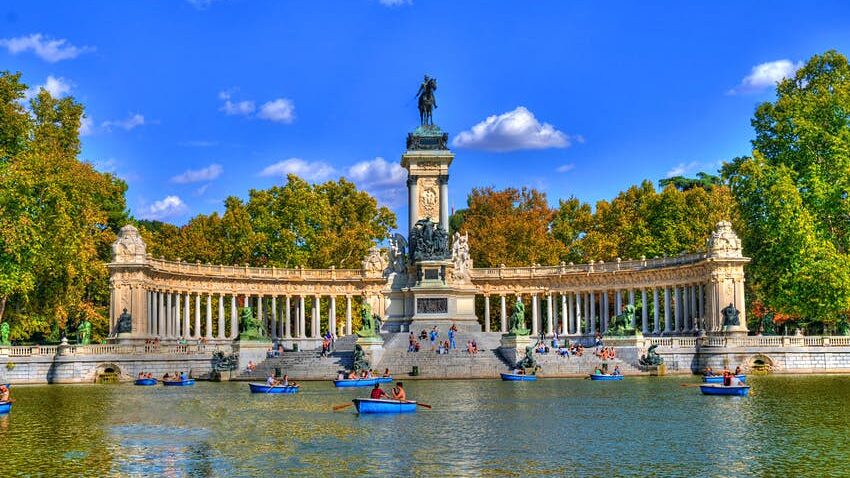
Weather features in Madrid
- Summer: Hot and dry, with temperatures often exceeding 35°C. July and August usually receive minimal rainfall.
- Winter: Cool, with temperatures dropping to 0°C and below at night. January and February are the coldest months.
- Spring and Fall: Moderate and pleasant, with temperatures between 10°C and 25°C. This is the ideal time to visit the city and take outdoor walks.
- Precipitation: The greatest amount of precipitation falls in the fall months, especially in October and November. Summer is the driest season.
Understanding the weather conditions will help you better plan your stay in Madrid, choose appropriate clothing and plan outdoor activities.
Madrid Attractions
Madrid, the capital of Spain, is renowned for its rich cultural heritage, magnificent architecture and variety of attractions. This city offers something interesting for everyone, from historic buildings and museums to parks and modern entertainment centers. In this section, we take a look at the main must-see attractions in Madrid.
1. Plaza Mayor
- Description: One of the most famous places in Madrid, the central square surrounded by elegant Spanish Renaissance buildings.
- Features: It is often used for various events, concerts and festivals. It is also home to numerous cafes and restaurants where you can enjoy local cuisine.
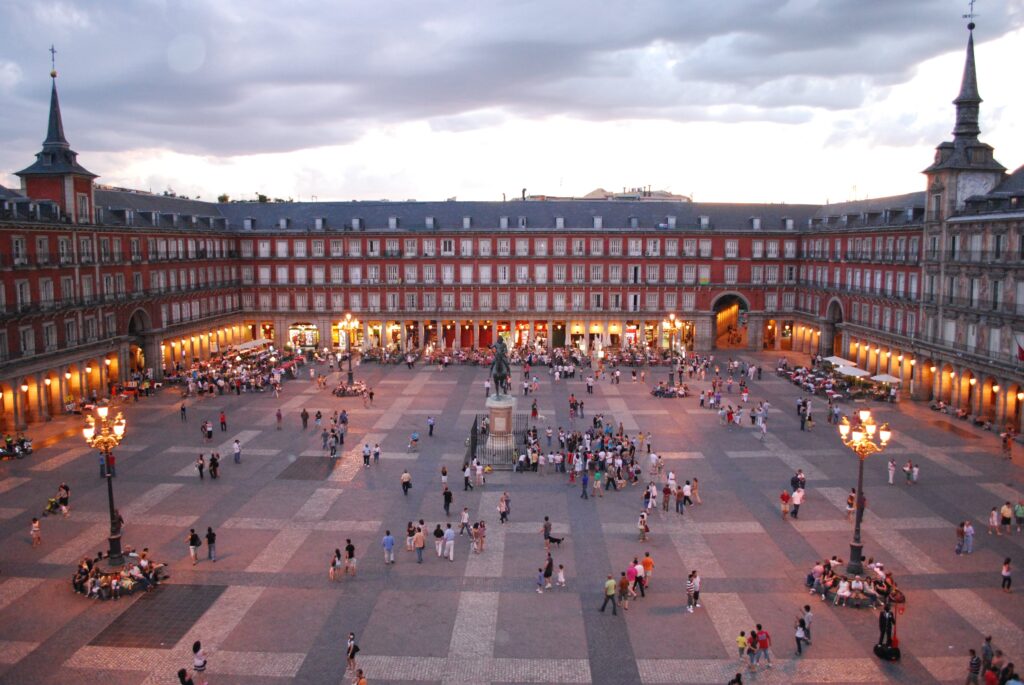
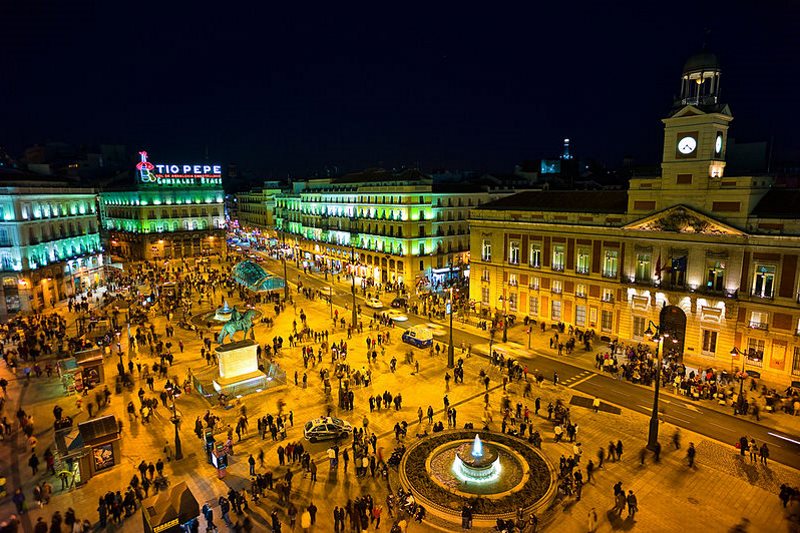
2. Puerta del Sol
- Description: The heart of the city, the symbolic center of Spain. Here is the zero kilometer, from which all the country's roads are counted.
- Features: The famous statue of the Bear and the strawberry tree, the symbol of Madrid. This place comes alive especially on New Year's Eve, when thousands of people gather to celebrate the New Year.
3. Royal Palace (Palacio Real)
- Description: One of the largest and most impressive palaces in Europe, the official residence of the Spanish royal family.
- Features: Open to the public, it features lavish rooms, art collections and the magnificent gardens of Campo del Moro.
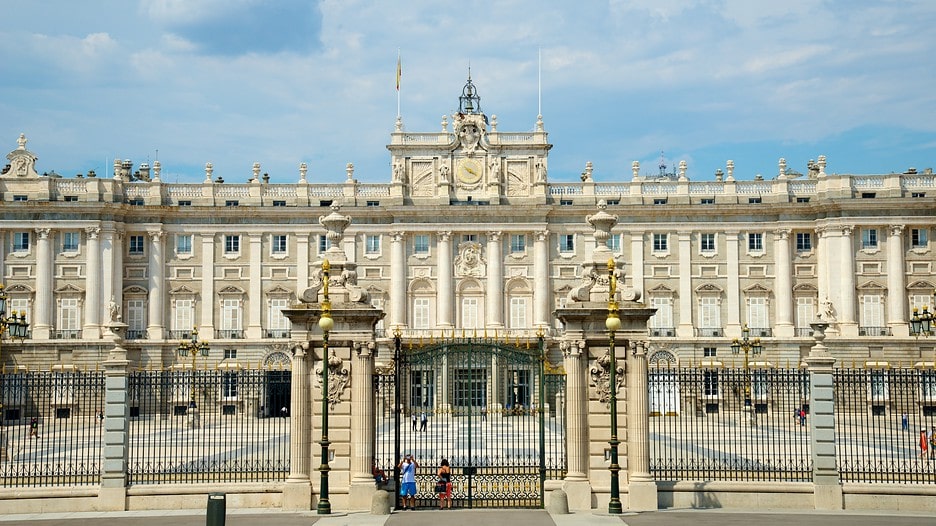
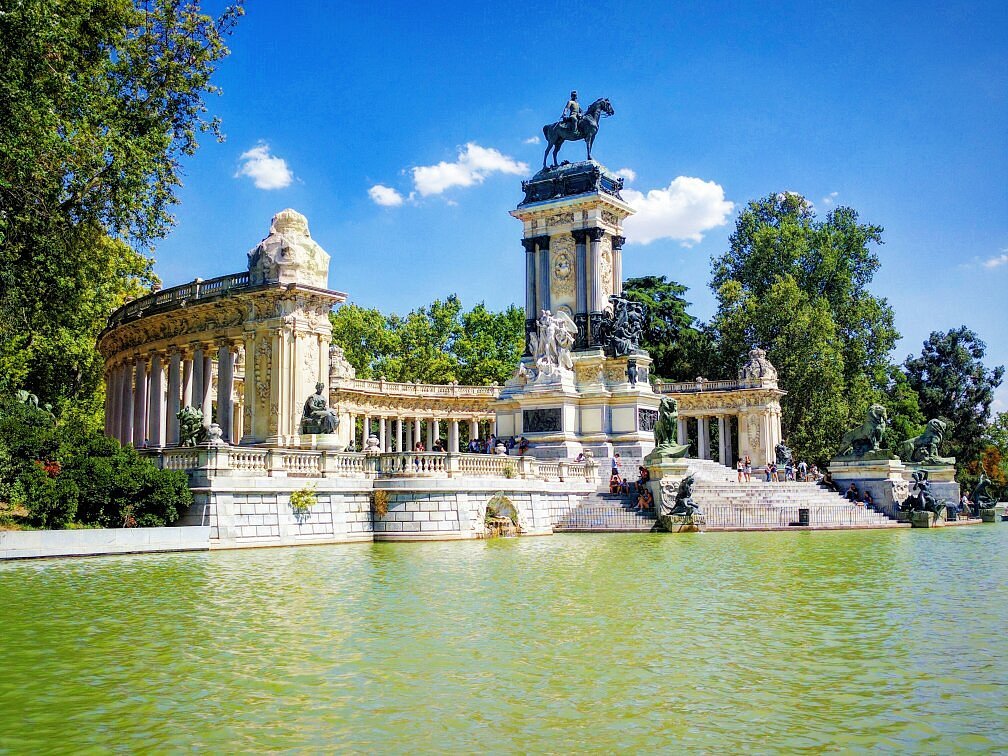
4. Parque del Retiro (Retiro Park)
- Description: One of the largest and most beautiful parks in Madrid, offering many activities and places to relax.
- Features: A boating lake, a crystal palace (Palacio de Cristal), a rose garden and many monuments and sculptures.
5. Museo del Prado (Prado Museum)
- Description: One of the most important art museums in the world, with an extensive collection of Spanish, Italian and Flemish paintings.
- Features: Works by masters such as Velázquez, Goya, Rubens and Bosch. This place is a must-see for art lovers.
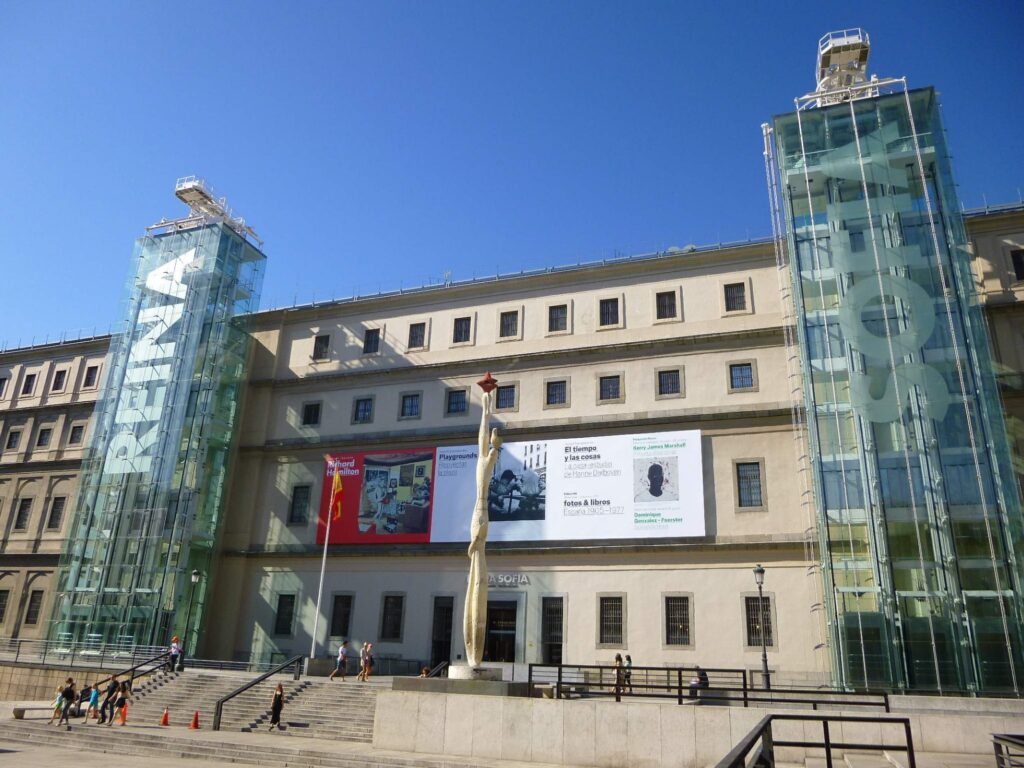
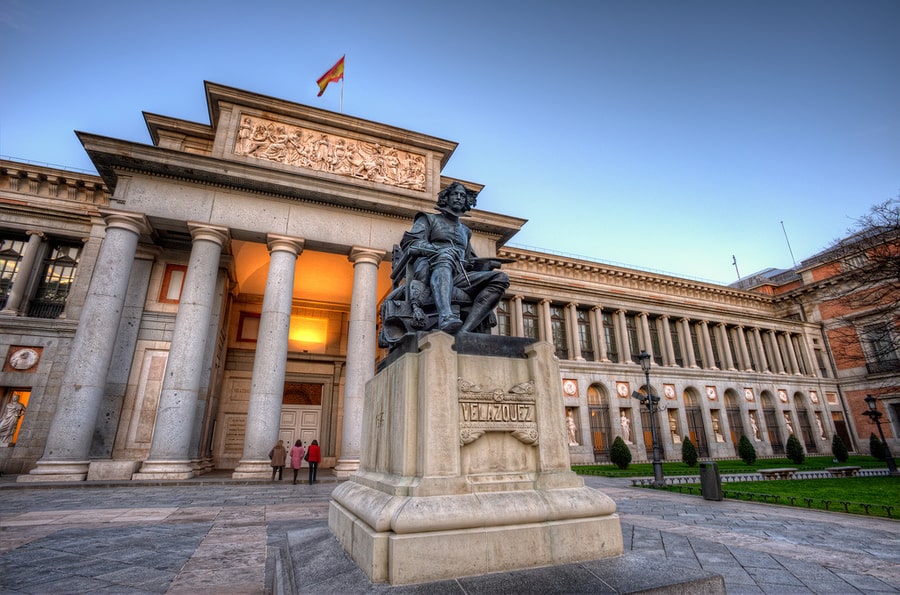
6. Queen Sofía Museum (Museo Reina Sofía)
- Description: Spain's National Museum of Modern Art, which houses Pablo Picasso's famous painting Guernica.
- Features: The museum has an extensive collection of 20th century art, including works by Salvador Dali and Juan Miró.
7. Gran Vía
- Description: Madrid's main street, known for its theaters, cinemas, stores and restaurants.
- Features: Early 20th-century architecture, plenty of entertainment venues and chic stores. This place is often called "Madrid's Broadway".
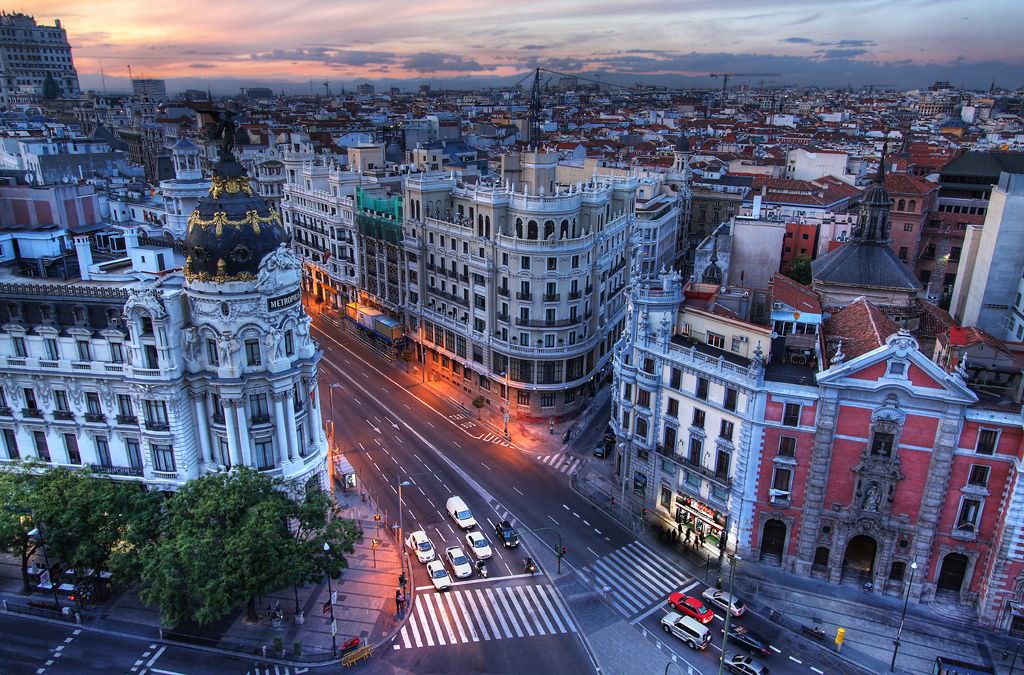
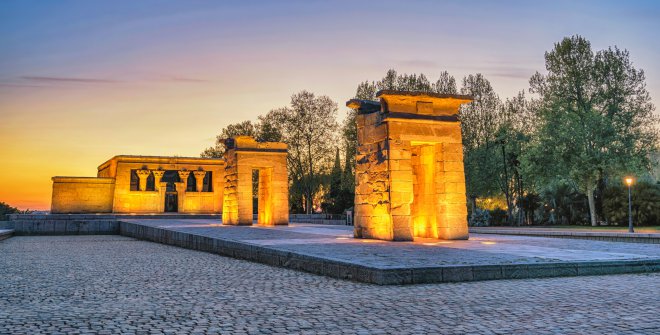
8. Templo de Debod (Temple of Debod)
- Description: An ancient Egyptian temple donated to Spain by Egypt in 1968.
- Features: The temple is located in a park and surrounded by a picturesque lake, especially beautiful in the evening when the lights are turned on. From here you can enjoy a beautiful view of the city.
9. Santiago Bernabéu Stadium (Estadio Santiago Bernabéu)
- Description: The home stadium of Real Madrid soccer club.
- Features: Opportunity to visit the club's museum, tours of the stadium including changing rooms, VIP areas and the pitch. A must for soccer fans.
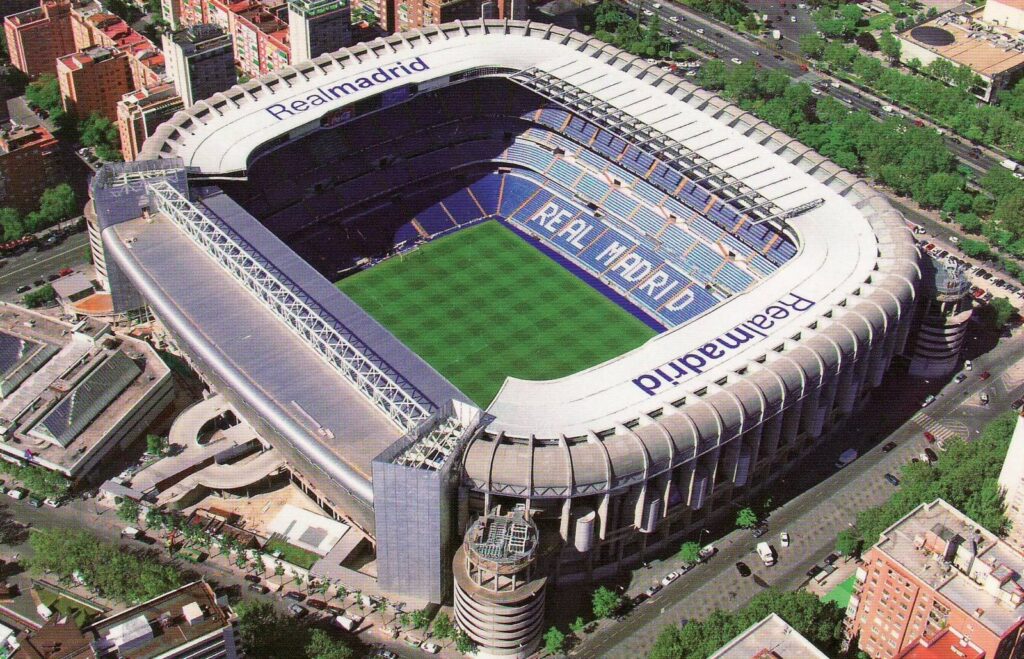
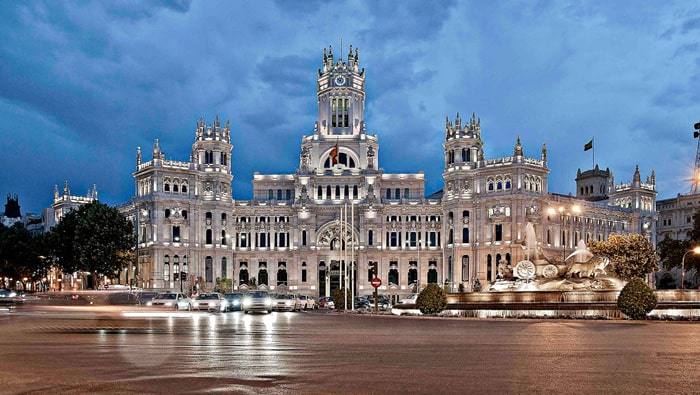
10. Plaza de Cibeles (Cibeles Square)
- Description: One of Madrid's most famous squares, home to the beautiful Cibeles Fountain and the Cibeles Palace.
- Features: Celebrations of sports victories and other major events are often held here. The Cibeles Fountain is one of the symbols of the city.
Madrid offers many attractions that reflect the city's rich history, culture and modern life. Whatever your interests, you are sure to find something that will impress you and leave an unforgettable impression. When planning your trip to Madrid, be sure to include a visit to these amazing places in your itinerary.
Madrid neighborhoods
Madrid is a city where each neighborhood has its own unique character, architecture and atmosphere. Choosing a neighborhood to live in or visit can have a significant impact on your impression of the city. In this section we will look at the most famous and popular neighborhoods in Madrid that are suitable for living, recreation and tourism.
1. Madrid city center
This is the historic heart of the city, home to iconic landmarks such as the Plaza Mayor, Puerta del Sol and the Royal Palace. Downtown Madrid is where history meets modernity, offering visitors numerous museums, theaters, restaurants and stores. Pedestrianized streets and plazas make this area ideal for strolling and exploring the city's culture.
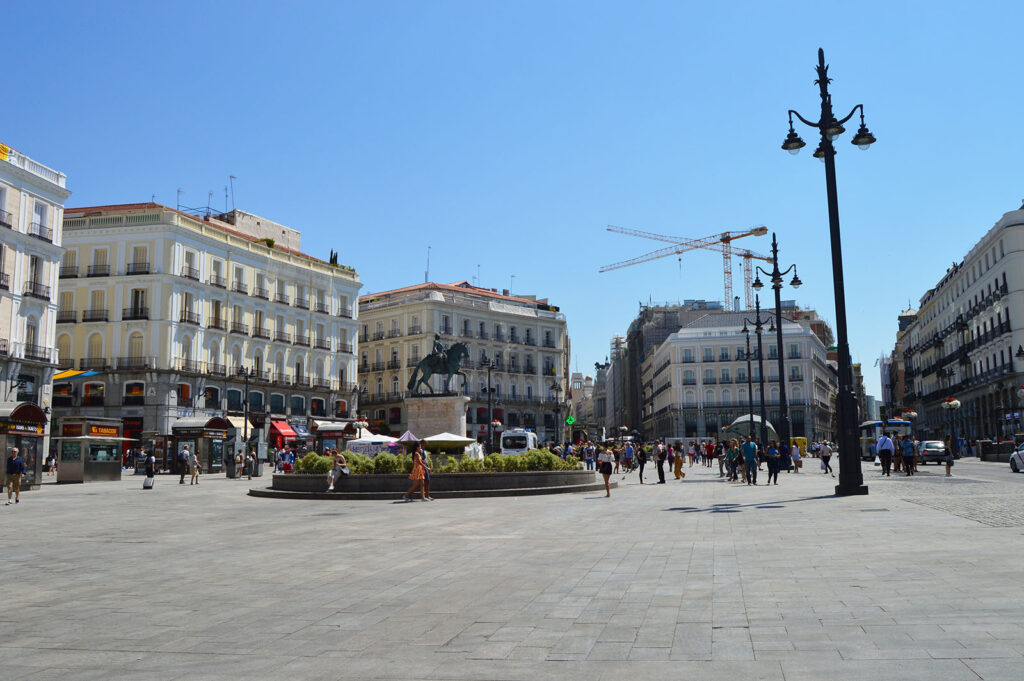
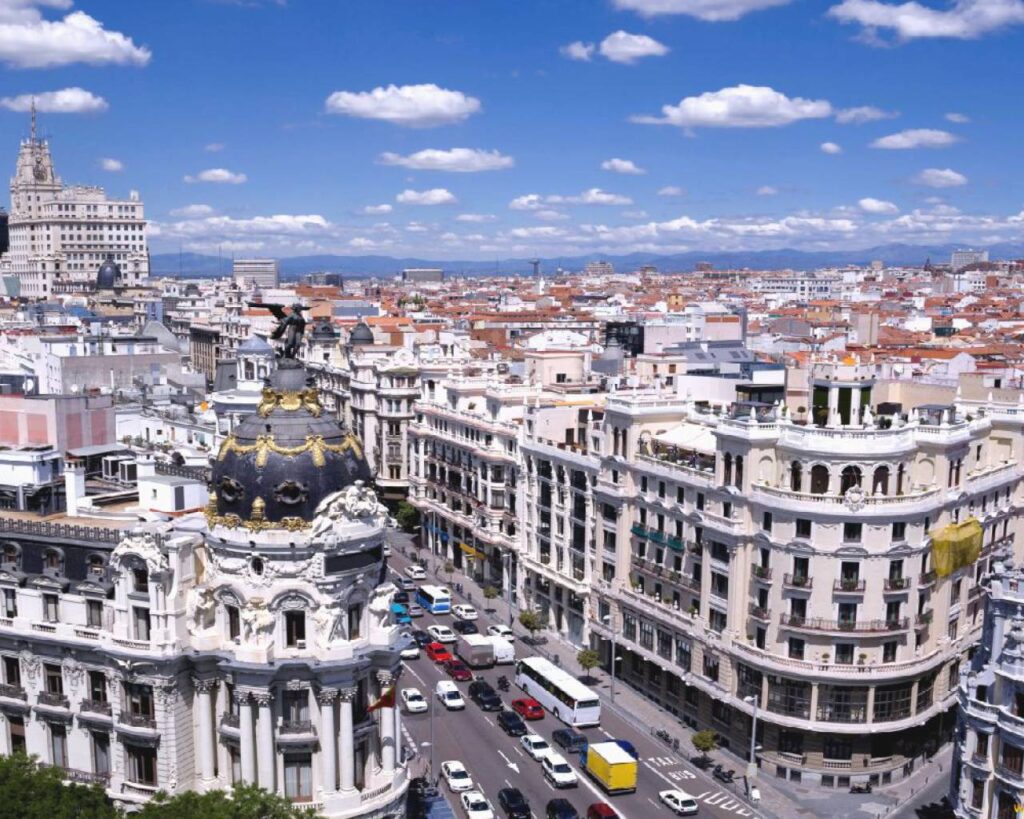
2. Salamanca
A prestigious and elegant neighborhood known for its luxury boutiques, expensive restaurants and elegant streets. Salamanca is a symbol of a high standard of living and refined taste. Here you can find the best fashion brand stores and enjoy fine dining in exclusive restaurants. The architecture of the neighborhood is characterized by stylish facades and well-kept public gardens.
3. Chambers
A traditional and cozy neighborhood with many old buildings and museums. Chambers attracts those who appreciate tranquility and comfort. There are historic buildings, museums, and cozy cafes and restaurants where you can enjoy the atmosphere of old Madrid. The neighborhood is also known for its green spaces and quiet residential streets.
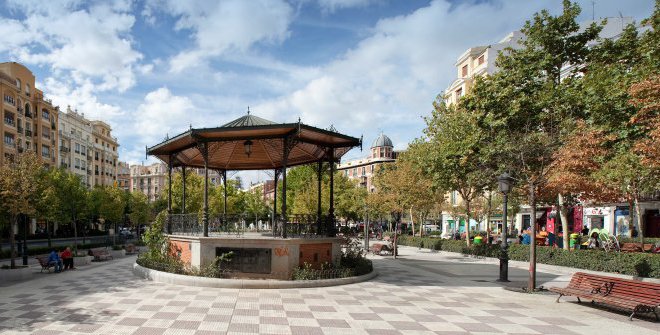
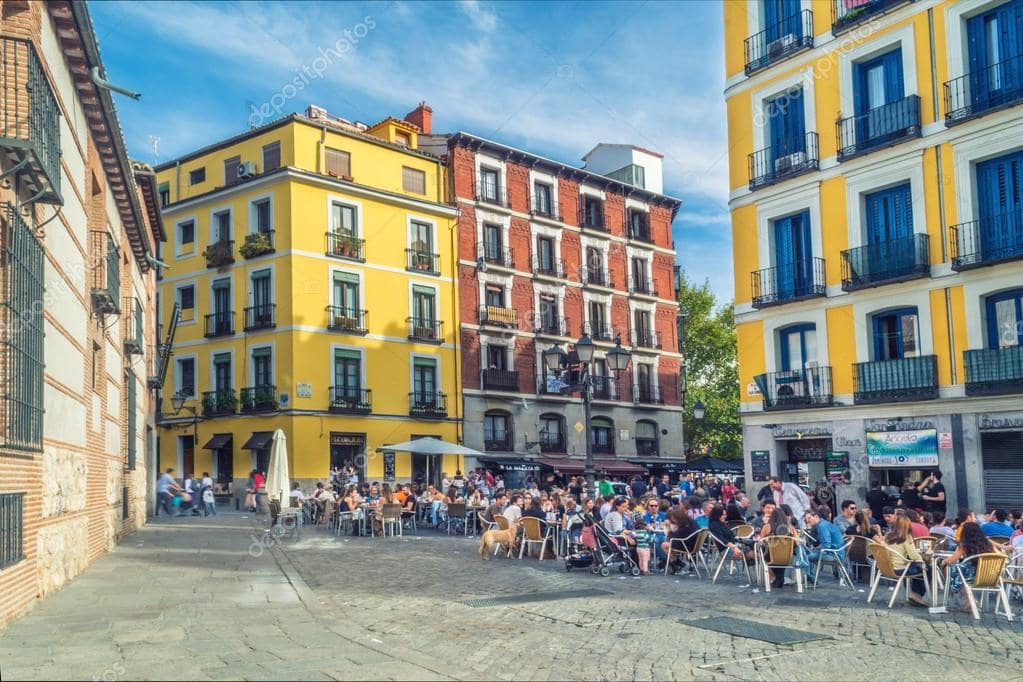
4. La Latina
One of Madrid's oldest and most picturesque neighborhoods, known for its tapas bars and markets. La Latina is the center of authentic Madrid culture. Narrow streets, old buildings and atmospheric bars make this neighborhood popular with locals and tourists alike. The neighborhood is particularly charming with its many markets, such as the San Miguel Market.
5. Malasaña
A creative and youthful neighborhood with numerous cafes, bars and boutiques. Malasaña is famous for its bohemian atmosphere and active nightlife. It is the place where artists, musicians and young people gather to spend time in cozy cafes and stylish bars. Malasaña is a center of creative industries and street art.
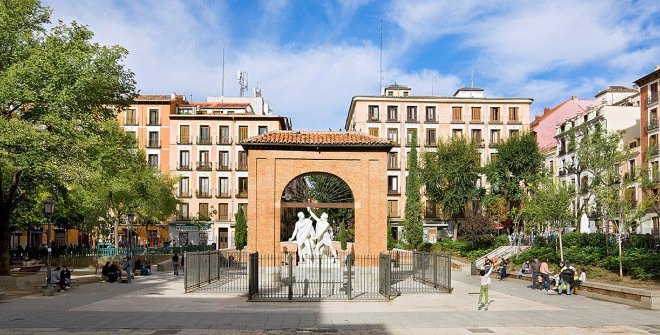
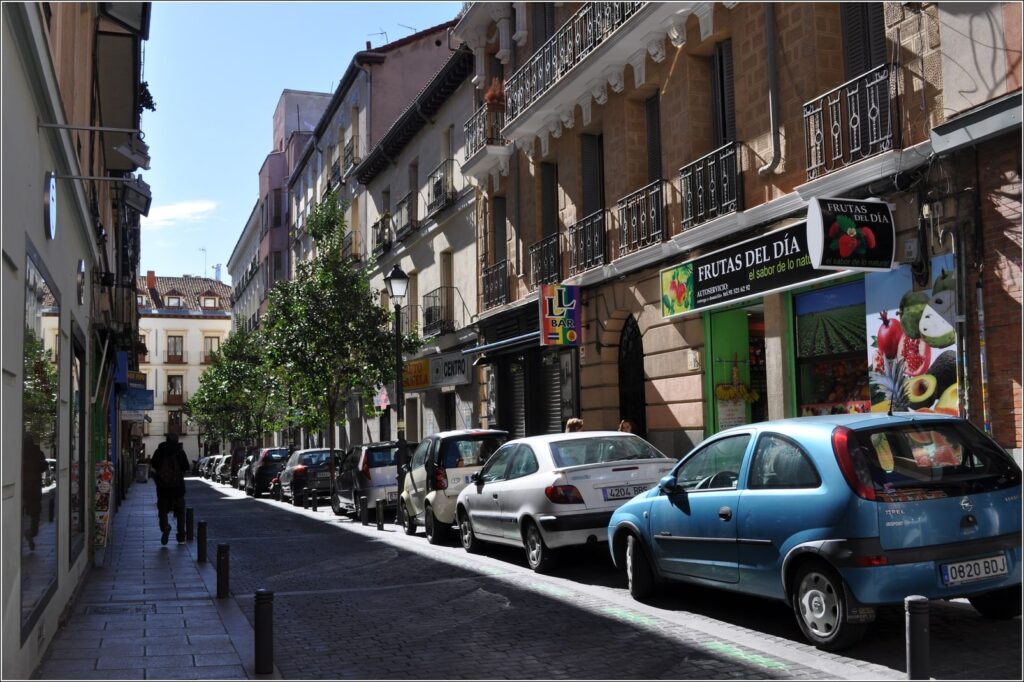
6. Chueca
A vibrant and dynamic neighborhood that is known for its multiculturalism and friendly atmosphere. It's a place where life is always buzzing and there is something for everyone, be it art, culture, gastronomy or nightlife. Chueca is known for its stylish bars, trendy clubs and boutiques as well as numerous cultural events and festivals.
7. Retiro
A residential neighborhood with extensive green spaces, including the famous Retiro Park. Retiro is an oasis of calm in the city center, ideal for families. It is home to many schools, playgrounds and sports facilities. Retiro Park offers great opportunities for walks, picnics and outdoor activities.
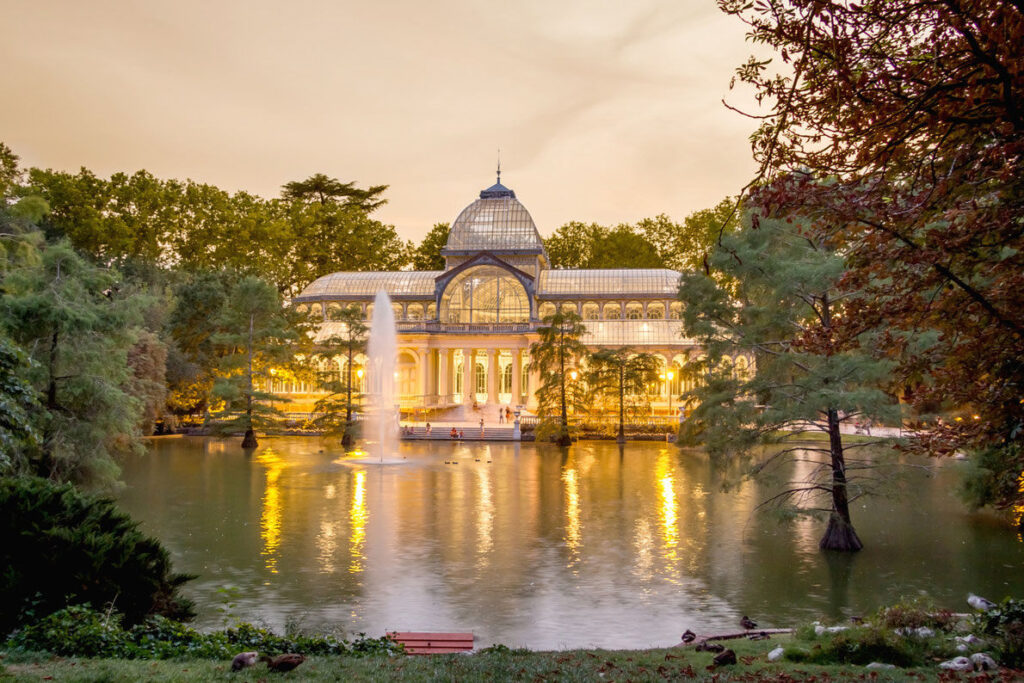
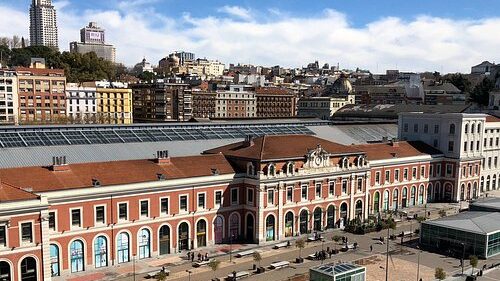
8. Moncloa-Arawak
Student and residential neighborhood with good accessibility to transportation and educational institutions. Moncloa-Aravaca is the center of academic life in Madrid. It is home to major universities and colleges, which attracts a large number of students. The neighborhood is also known for its green spaces and affordable housing.
9. Usera
A culturally diverse neighborhood known for its ethnic restaurants and markets. Usera is the center of Madrid's multicultural life. Here you can find restaurants with cuisines from around the world, as well as cultural centers and ethnic stores. The neighborhood is attractive for its accessibility and variety of cultural activities.
Each neighborhood in Madrid has its own unique characteristics and offers a variety of living and recreational opportunities. Choose the one that suits your preferences and lifestyle.
Pros and cons of living in Madrid
Pros and cons of living in Madrid
Madrid, the capital of Spain, is one of the most dynamic and culturally rich cities in Europe. However, like any other major city, living in Madrid has its advantages and disadvantages. This section will help you better understand what to expect from living in this amazing city.
The pros of living in Madrid
- Cultural wealth: Madrid is a cultural capital with many museums, galleries, theaters and historical sites. Famous museums such as the Prado, Reina Sofia and Thyssen-Bornemisza offer priceless art collections. The city is famous for its festivals, concerts and cultural events that take place all year round.
- Gastronomy: Spanish cuisine is world-renowned, and Madrid is home to some of the country's best dishes, including tapas, paella and jamon. The city has a huge number of restaurants, bars and cafes to suit all tastes and budgets.
- Climate: Madrid enjoys a continental climate with hot summers and mild winters. It has more sunny days per year than most other European cities, making life here more pleasant.
- Transportation system: The city has one of the best transportation systems in Europe, including an extensive network of subways, buses and commuter trains. This makes getting around in and out of the city convenient and fast. Madrid is also well connected to other parts of Spain and Europe through rail and air transportation.
- Education: Madrid is home to some of the best universities and educational institutions in Spain, making it an attractive destination for students and academics.
- Parks and green spaces: The city offers many parks and green areas such as Retiro Park and Casa de Campo, which are ideal for walks, picnics and outdoor activities.
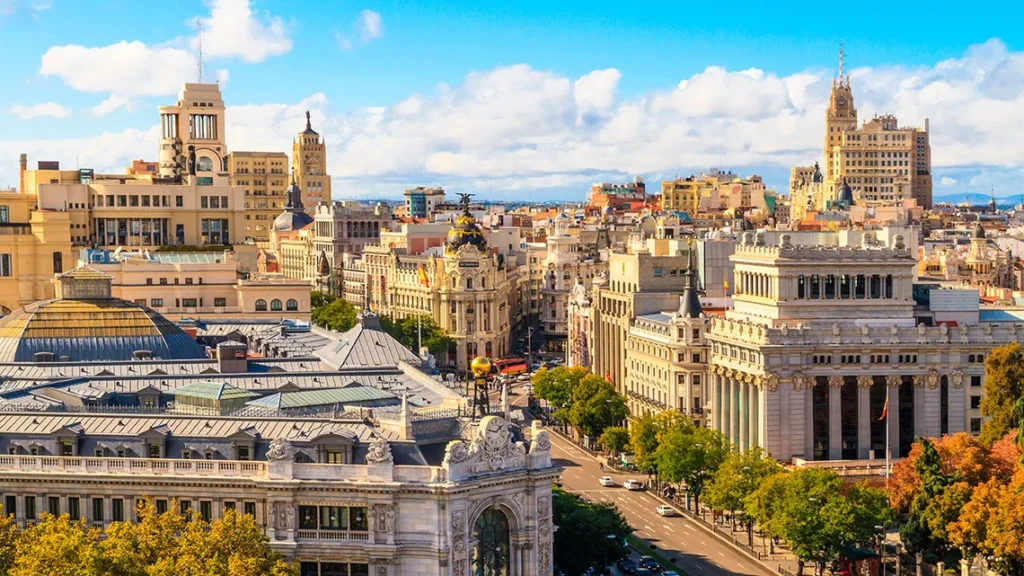
The cons of living in Madrid
- High cost of living: Madrid is one of the most expensive cities in Spain. High housing prices, especially in the central areas, can be a significant financial burden. Restaurants, entertainment and other services can also be quite expensive.
- The heat of summer: Summer in Madrid can be very hot, with temperatures often exceeding 35°C. This can be uncomfortable for those who are not used to this climate. Many residents leave for the coast in August to escape the heat.
- The noise and the crowds: Madrid is a busy city with high noise levels, especially in the central areas. Constant tourists and heavy traffic can cause additional inconvenience. Popular areas can be crowded, making it difficult to move around comfortably and relax.
- Air pollution: Like many large cities, Madrid faces the problem of air pollution, especially during periods of heavy traffic.
- Parking difficulties: It can be difficult to find a parking space in downtown areas, and parking costs can be high.
- Bureaucracy: Spanish bureaucracy can be complicated and slow. The process of processing documents such as residence permits or residence registration can take a lot of time and effort.
Madrid is a city with many opportunities and a vibrant cultural life that can offer its residents a high standard of living and a variety of entertainment. However, it is important to consider some disadvantages, such as the high cost of living and the hot climate in the summer. Before deciding to move to Madrid, weigh up the pros and cons to make an informed choice.
Comparison of Madrid neighborhoods
| District | Main Features | Positive | Minuses |
|---|---|---|---|
| Center | Main attractions | Proximity to major attractions | High housing prices, noisy and crowded |
| Salamanca | Prestigious and elegant neighborhood | High level of security | High housing and living costs |
| Chambers | Historical buildings and museums | Quiet and cozy neighborhood | Fewer recreational activities |
| La Latina | A lively and colorful neighborhood | Many cultural events | Noise and large numbers of people |
| Malasaña | Creative atmosphere and nightlife | Active nightlife, friendly atmosphere | Noise and safety problems at night |
| Chueca | LGBTQ+ community and events | Open and tolerant atmosphere | High housing prices, noisy at night |
| Retiro | Lots of green areas | Family friendly, quiet neighborhood | Fewer recreational activities |
| Moncloa-Arawak | Universities and educational institutions | Many educational institutions | Fewer cultural activities |
| Usera | Cultural diversity and ethnic restaurants | Affordable housing, rich culture | Fewer tourist attractions |
| Visadermosis | Modern buildings and business centers | High level of security, new residential complexes | High housing prices, less developed cultural sector |
This table helps to visually compare the main characteristics of the different neighborhoods in Madrid to help you choose the most suitable area to live or visit.
Soccer in Madrid
Madrid, the capital of Spain, is one of the most important soccer cities in the world. Soccer here is not just a sport, it is part of the culture and everyday life. In this section we will look at the city's main soccer clubs, stadiums, and the soccer traditions and events that make Madrid unique for fans of the sport.
Major soccer clubs
1.Real Madrid
- History: Founded in 1902, Real Madrid is one of the most successful and famous soccer clubs in the world. The club has a rich history of winning national and international competitions.
- Stadium: The Santiago Bernabeu is a legendary stadium that seats over 80,000 spectators. It is located in the city center and is a place of pilgrimage for fans from all over the world.
- Accomplishments: Real Madrid holds the record for the most UEFA Champions League titles won and a host of other tournaments.
2.Atletico Madrid
- History: Founded in 1903, Atletico Madrid is the second most popular and successful club in the capital. The club is known for its passionate and loyal army of fans.
- Stadium: The Wanda Metropolitano is a modern stadium opened in 2017 with a capacity of around 68,000 spectators. This stadium is considered one of the most modern stadiums in Europe.
- Accomplishments: Atletico Madrid have won La Liga, the Spanish Cup and the UEFA Europa League on numerous occasions.
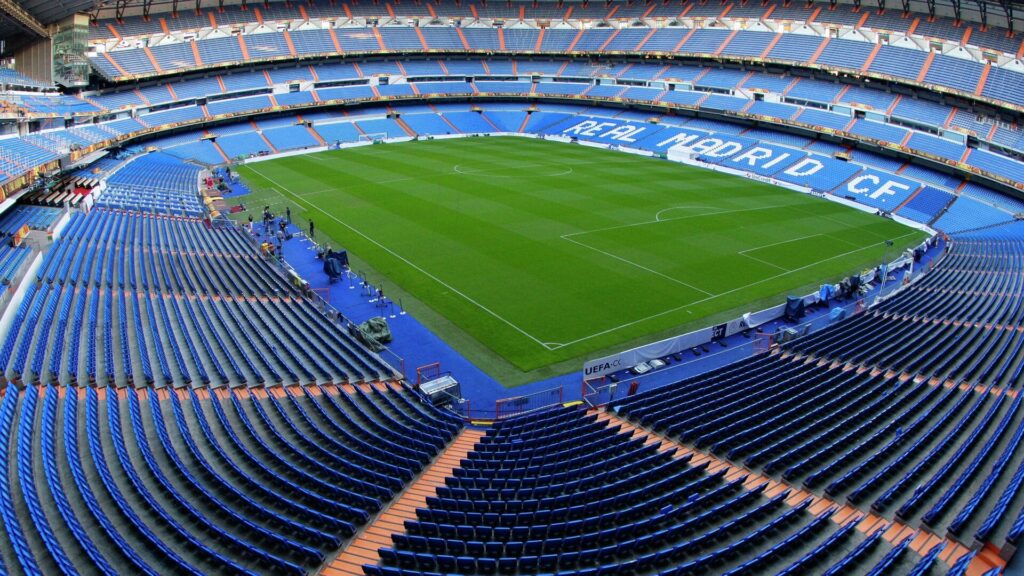
Soccer traditions and activities
1.Madrid derby
- One of the most anticipated events in Spanish soccer is the clash between Real Madrid and Atletico. The Madrid derby always attracts a lot of attention and gathers full stadiums.
- The atmosphere at such matches is inexpressible: the fans of both clubs create an unforgettable atmosphere in the stands.
2.Youth Academies
- Real Madrid and Atletico Madrid have some of the best soccer academies in the world. These academies are constantly producing talented players who then move on to the main teams or other major clubs.
- A lot of kids and teenagers dream of joining these academies to start their career in professional soccer.
3.Soccer tours and museums
- Both of the city's main stadiums offer tours for tourists where you can learn more about the clubs' history, see trophies and visit the inside of the stadiums.
- The Real Madrid Museum at the Santiago Bernabeu and the Atletico Madrid Museum at the Wanda Metropolitano are must-see places for all soccer fans.
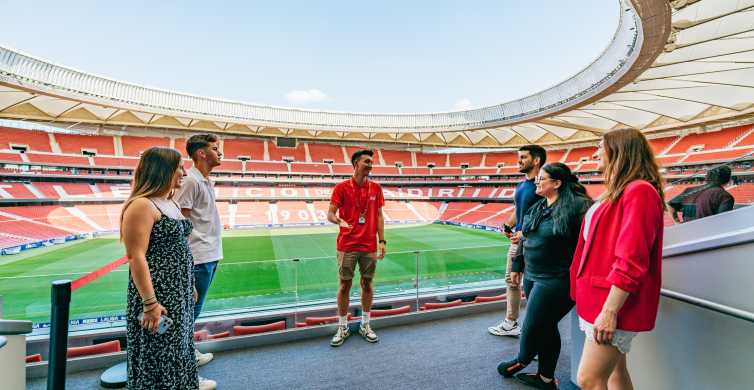
Soccer infrastructure
1.Training bases
- Real Madrid and Atletico Madrid have modern training bases where players prepare for matches and recover after games. These bases are equipped with the latest equipment and offer everything you need to keep your players at a high level of fitness.
2. Soccer schools
- Madrid is home to many soccer schools and academies where children and adults can learn soccer. These schools often work in partnership with local clubs and offer quality training.
Soccer in Madrid is more than just a game. It is a cultural phenomenon that brings people together and creates a unique atmosphere in the city. Whether you are a passionate fan or just a sports enthusiast, Madrid offers you plenty of opportunities to enjoy soccer in the heart of Spain.
Madrid Reviews
Maria, resident of Madrid:
"The city offers many cultural events, from theater productions to music concerts. There is always something interesting to do here. I especially like weekends when you can visit exhibitions and concerts."
Thomas, a tourist from Germany:
"The food in Madrid is incredible. Tapas bars, restaurants with paella and jamon, and cozy cafes with great desserts. It is a real paradise for foodies. Every day you can discover new gastronomic corners."
Jessica, a tourist from the United States:
"The nightlife in Madrid is unparalleled. The city comes alive at night and it seems like the party never ends here. The bars, clubs and restaurants are simply endless. I especially liked Malasaña with its bohemian atmosphere."
Madrid is a city that evokes different emotions and impressions in people. This section presents reviews of real people who share their thoughts and experiences about living and visiting the capital of Spain.
Video about Madrid
For comfortable living, the Salamanca, Retiro and Chambéry districts are popular. Salamanca is prestigious and elegant, Retiro is family and green, and Chambéry is traditional and cozy.
Be sure to visit the Plaza Mayor, Puerta del Sol, the Royal Palace, Retiro Park and the Prado and Reina Sofia museums. These places offer a unique blend of culture and history.
The best time to visit Madrid is spring (April-June) and fall (September-October). During this time, the weather is mild and pleasant and the city is not so crowded with tourists.
Housing options in Madrid range from luxury apartments in Salamanca to more affordable apartments in the Usera and Visadermoz neighborhoods. There are also plenty of hotels and hostels.
The cost of living in Madrid varies depending on the neighborhood. Central neighborhoods such as Salamanca and Chueca are more expensive, while on the outskirts, such as Usera, prices are more affordable.
Madrid has an excellent transportation system including metro, buses and commuter trains. The metro is the most convenient and fastest way to get around the city.
Madrid has plenty of entertainment: theaters, museums, parks, nightclubs, restaurants and sporting events. The city offers an active nightlife and a rich cultural program.
Madrid has a continental climate: hot and dry summers with temperatures up to 35°C, cool winters with temperatures up to 0°C, mild spring and fall.
What are the best neighborhoods in Madrid to live in?
For comfortable living, the Salamanca, Retiro and Chambéry districts are popular. Salamanca is prestigious and elegant, Retiro is family and green, and Chambéry is traditional and cozy.
What are the must-see sights in Madrid?
Be sure to visit the Plaza Mayor, Puerta del Sol, the Royal Palace, Retiro Park and the Prado and Reina Sofia museums. These places offer a unique blend of culture and history.
When is the best time to visit Madrid?
The best time to visit Madrid is spring (April-June) and fall (September-October). During this time, the weather is mild and pleasant and the city is not so crowded with tourists.
What kind of accommodation can I find in Madrid?
Housing options in Madrid range from luxury apartments in Salamanca to more affordable apartments in the Usera and Visadermoz neighborhoods. There are also plenty of hotels and hostels.
What is the cost of living in Madrid?
The cost of living in Madrid varies depending on the neighborhood. Central neighborhoods such as Salamanca and Chueca are more expensive, while on the outskirts, such as Usera, prices are more affordable.
How to get around Madrid?
Madrid has an excellent transportation system including metro, buses and commuter trains. The metro is the most convenient and fastest way to get around the city.
What entertainment options are available in Madrid?
Madrid has plenty of entertainment: theaters, museums, parks, nightclubs, restaurants and sporting events. The city offers an active nightlife and a rich cultural program.
What is the climate like in Madrid?
Madrid has a continental climate: hot and dry summers with temperatures up to 35°C, cool winters with temperatures up to 0°C, mild spring and fall.
